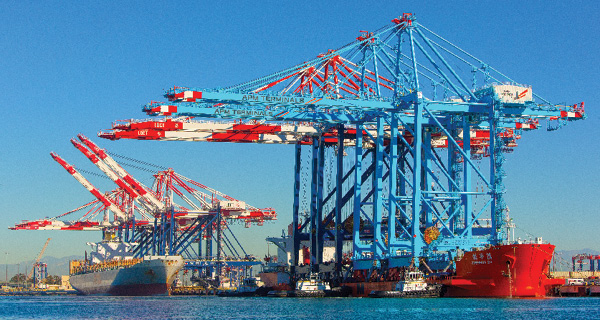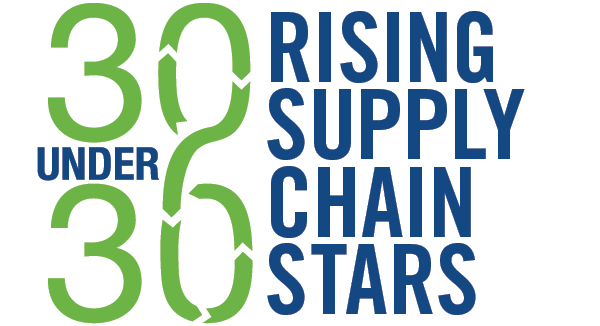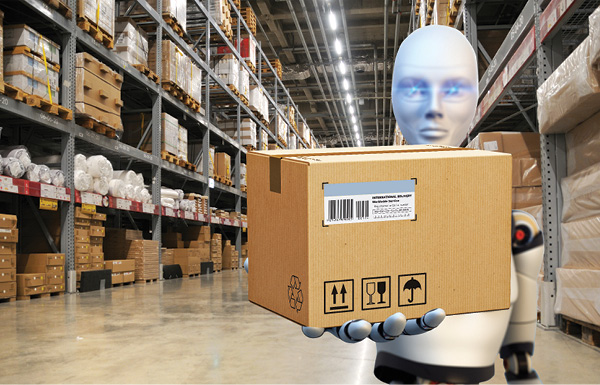Articles
Logistics

Goodbye, Linear Supply Chain. Hello, Digital Supply Network
Ready or not, the death of the linear supply chain is upon us. Supply chains built to deliver reliable, cost-effective results are no longer fit for purpose in today’s digitally driven world. Enter the digital supply network (DSN). DSNs intertwine, even harmonize, four supply chains—physical, information, talent, and financial—that businesses have operated separately for decades. […]
Read More
Supply Chain Sustainability Takes Root
Whether the motive is saving the environment or saving money, companies are embracing supply chain sustainability from the ground up.
Read More
10 Greenest Ports in America
From Atlantic to Pacific, these ports know how to get their green on.
Read More
Chemical Logistics: Formula for Success
As the chemical industry continues to grow, shippers and their service partners work hard to keep product moving, trouble-free.
Read More
30 Under 30 Rising Supply Chain Stars: Defining a New Generation
Inbound Logistics, ISM, and ThomasNet honor 30 professionals who are 30 or younger, and already making their mark in supply chain and purchasing management.
Read More
Cloud-Based Route Planning? That Would Be Ideal!
For a wholesale distributor of electrical supplies, auto parts, and industrial products, the best delivery routes run through the cloud.
Read More
Enterprise Technology Freight Train Finally Reaches Logistics Sector
About $19 trillion worth of goods are exported globally annually. But despite the scope of global trade, logistics was, until recently, not on the tech radar. An analysis of top technology media sites since 2007 found over 2,000 mentions of a popular social media tool, while “freight” and “cargo” were referenced less than 600 times. […]
Read MoreFinding a Cure for Sweating Slab Syndrome
Despite the significant strides in medical technology in the 21st century, identifying a cure for the common cold is still one of medicine’s most elusive pursuits. Similarly, the phenomenon in warehouse operations known as sweating slab syndrome (SSS) has perplexed even the most experienced industry experts when it comes to the causes and potential cures. […]
Read More
A Head in the Cloud?
The migration to web, cloud, and SaaS solutions continues, and it’s a good thing for shippers. Here’s why you’ll love getting ahead in the cloud.
Read More
Drones in last-mile logistics: hype or help?
“Drones will complement the strategies of complex supply chains and cultivate a culture that focuses on innovation. Drones will eventually provide more control/consistency of last-mile logistics, which will improve industry efficiencies; however, we are years from realizing this full potential.”
Read More
INTTRA CEO John Fay: Trading Stocks for Ships
John Fay made his name on Wall Street, at companies that operate digital platforms for trading securities and other financial instruments. In 2014, he moved into the logistics world, taking the helm at INTTRA, a global marketplace for ocean transportation. That’s not as big a leap as it might sound. MORE TO THE STORY: Time […]
Read More
Dave Christensen: A Spirited Approach to Supply Chain Management
Dave Christensen is vice president of supply chain with Glazer’s Inc., a Dallas-based distributor of alcoholic beverages. He has been with Glazer’s since 2004. Responsibilities: Demand planning, replenishment, logistics, and master data management. Experience: Supply chain consultant, Accenture. Education: BS, industrial engineering, Purdue University, 1998. Dave Christensen: A Spirited Approach Growing up, math and science […]
Read More
Trends—May 2016
Robots Coming Soon to A Warehouse Near You Even with the rise of the Internet of Things and the advancement of automation technologies, 80 percent of global logistics facilities still operate manually, according to Robotics in Logistics, a report by Deutsche Post DHL. But the time for robots in logistics is upon us. "Robots work […]
Read More
Global Logistics—May 2016
Earthquakes Shake Up Global Supply Chains The global supply chain is still feeling the aftershocks of a 6.5-magnitude earthquake that struck Japan on April 14, 2016, followed by a 7.3-magnitude earthquake two days later on Japan’s island of Kyushu. With property and local infrastructure severely damaged, many companies will continue to feel the effects in […]
Read More
Changing the Shape of Supply and Demand
Demand sensing and demand shaping have become important strategies when considering customer collaboration and downstream visibility to improve supply chain efficiency. Demand sensing refers to forecasting methods that use mathematical techniques and real-time information to create more accurate demand forecasts (a variety of supply chain analytics), while demand shaping is the act of influencing demand […]
Read More
Social Media Puts Supply Chain Change at Your Fingertips
More and more companies are using social media to better understand the needs of consumers. When it comes to supply chain management, shippers can gain insight into which products are selling, how they’re being distributed, and how to improve the entire supply chain. Like any tool, social media is a way to collect more information, […]
Read More
CBP’s ACE Reporting Will Reduce Global Trade Risks
Even though the rollout of the Automated Commercial Environment (ACE) has had a bevy of delays, quicker and easier data access will benefit government agencies and the trading industry. As the U.S. Customs and Border Protection (CBP) continues to roll out the ACE Single Window program throughout 2016, the goal remains the same: to eliminate […]
Read More
Three Key Points to Communicate to Become Your Customers’ Dream Provider
Communication and transparency are key to being a good partner to your clients. If your logistics organization is in the process of responding to RFP questions from a plum potential customer, positioning your logistics organization as the ideal fit for that customer depends on clear communication of three defining factors of your business: specialization, size, […]
Read More
Managing Warehousing Requirements During Peak Periods (Without Committing to Long-term Contracts)
Managing peak period shipment volume is a structural challenge in the U.S. economy. Those preoccupied with executing order fulfillment services spend much of the year thinking about and planning for it. The surge is a three- to four-month peak in first inbound, and then outbound shipments, with overlap. Shipments to retailers come first, followed by […]
Read More
TMS: Time to Make Your Move?
Transportation management systems are becoming less expensive and easier to own. Now, companies of any size can get in the game.
Read More